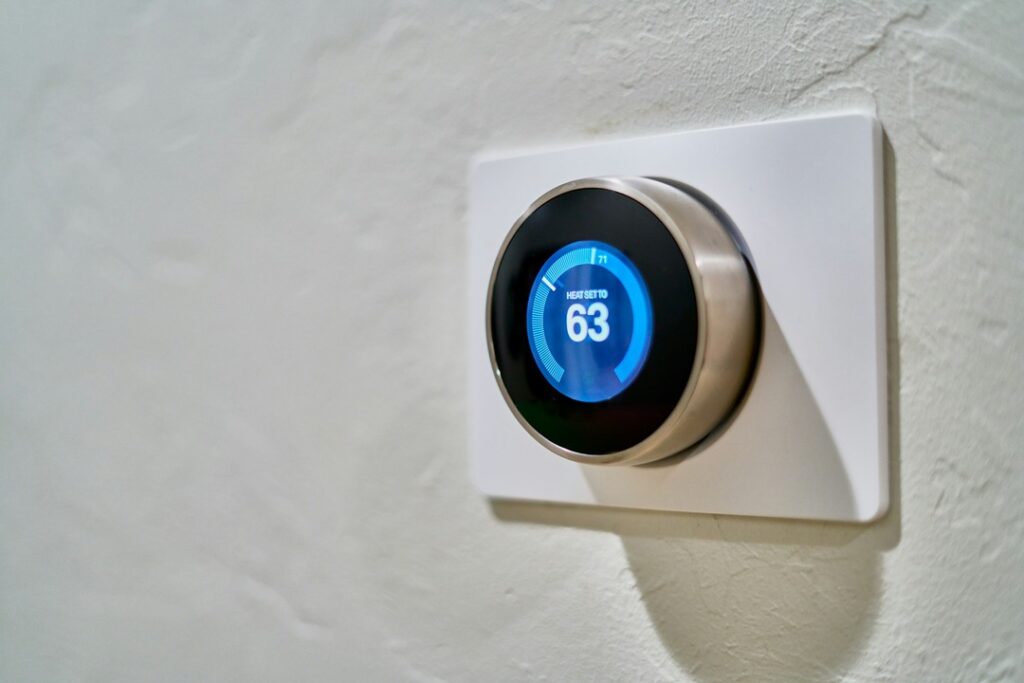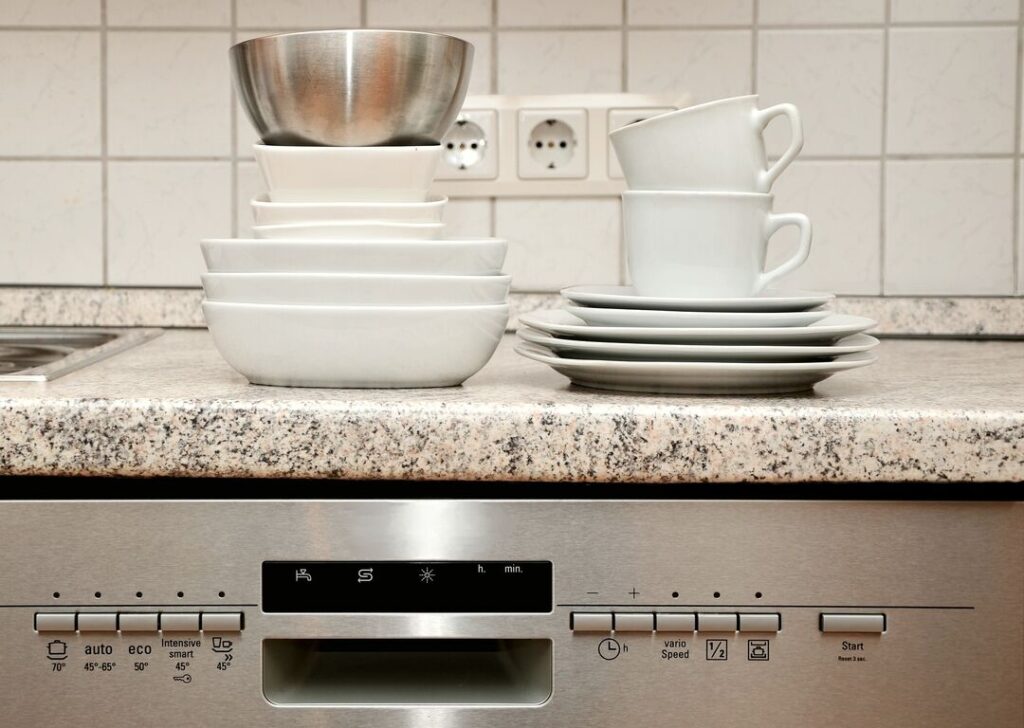So you’ve gone solar, and you want to figure out how to conserve energy so you can save even more money on your electricity bills and optimize your energy use. How do you accomplish that? As temperatures finally cool down in the DMV, let’s dig into some tips to save power in your house.

Weatherize Your Home
One first step to save power is to weatherize your home before snow and freezing temperatures hit. The Public Service Commission of the District of Columbia suggests five basic steps to weatherize your home:
- Installing window insulation shrink kits
- Caulking drafty windows
- Cleaning or replacing HVAC filters
- Weatherstripping doors and windows
- Installing foam power outlet sealers to reduce air leaks
You can look into weatherization programs run by local governments or utilities. Washington DC’s Department of Energy & Environment has offered a Weatherization Assistance Program in the past. However, the program is currently on hold. The department does suggest submitting an application anyway to be placed on a waitlist.
Maryland’s Department of Housing and Community Development offers their EmPOWER Maryland Limited Income Energy Efficiency Program, which provides income qualified households (who have accounts with either Pepco, BGE, Washington Gas, FirstEnergy or Delmarva Power) with an energy audit and then with a contractor to perform energy efficiency upgrades like attic insulation, lighting retrofits, or furnace cleaning, to name a few.
Virginia’s Department of Housing and Community Development offers a Weatherization Assistance Program as well. They work with nonprofits to implement the program, so you can find your provider by county on their website. Similarly to the other programs mentioned, income qualified households can participate to receive an energy evaluation and then weatherization upgrades.
Install Energy Efficient Appliances
This tip applies not just to wintertime, but year round! As you purchase new appliances or electronics, pick out Energy Star certified products to save power. You can search for rebates by zip code via Energy Star’s Rebate Finder (in the middle of the page).

Adjust Your Thermostat
The Department of Energy suggests saving power in the winter by setting your thermostat to 68°F to 70°F when you’re awake. They also suggest choosing eight hours a day to set your thermostat 7°F to 10°F cooler than its normal setting — perhaps while you’re sleeping or out of the house — to save up to 10% a year on heating and cooling bills. (Just be sure you don’t set temperatures too cold to avoid pipes bursting or pets getting too chilly!)
You can adjust your thermostat manually, or a programmable or smart thermostat can do it for you.
If you have a heat pump, their recommendations change. The Department of Energy says when the pump’s in heating mode, setting its thermostat back can actually cause it to operate inefficiently. Instead, they recommend maintaining a moderate setting. Some companies offer programmable thermostats designed specifically for heat pumps; otherwise, the department doesn’t recommend you use one with a heat pump.
Cut Down On Water Heating
Water heating is typically a house’s second largest energy expense, according to the Department of Energy, accounting for around 18% of the power your house consumes. They suggest four basic ways to cut your water heating costs:
- Use less hot water (like using cold water in your clothes washer — more on that below)
- Turn down your water heater’s thermostat (they suggest setting it to 120°F)
- Insulate your water heater and pipes
- Purchase a more efficient water heater, such as a tankless, heat pump, or solar water heater (check out this graphic to compare and contrast them)

Wash Your Clothes In Cold Water
Today’s clothes washers can handle washing in cold water, according to GE Appliances. And as 75 to 90% of electricity your clothes washer consumes simply goes to heating water, cold water cycles will lower your electric bill.
GE says washers will clean most clothing items and remove stains just fine in cold water cycles. Cold water is even preferable for some fabrics, like silk or dark/colorful fabrics, and does a better job at getting rid of sweat or blood stains. Plus, your clothes are less likely to fade, shrink, or wrinkle in cold water.
A couple exceptions: certain synthetic fabrics or knits do better in hot water. And if you’re washing clothes or sheets to sanitize them, like if someone in your home is sick, that’s another time to opt for a hot water cycle as hot water can slow germs spreading. But for basic, everyday clothes washing, cold water is going to do the trick and save you power and money.
And many modern detergents include enzymes that work in temperatures down to 60°F. Check your detergent — chances are good the packaging will say it works for cold water cycles as well as hot ones, and may suggest different detergent amounts to use for different temperature cycles. (You probably don’t need to purchase a specialized cold water detergent.)

Use Your Dishwasher
Yep, that’s right. Turns out washing dishes by hand actually consumes more water, and is more expensive than simply running an energy efficient dishwasher. So this tip saves you time and money!
Check your dishwasher to make sure it has an Energy Star label, and only run it with full loads. In addition, check to see if your dishwasher is a compact capacity or standard capacity appliance. Per the Department of Energy, as compact capacity dishwashers hold less dishes, you may need to operate them more, causing you to spend more money on electricity. Look to see if you have cycle selections too — shorter cycles use less water.
Running an energy-efficient dishwasher rather than hand-washing can save 5,000 gallons of water every year, plus $40 in power bills, which may not sound huge, but you’ll also be saving about 230 hours of time.
Fight Vampire Or Phantom Power
Many devices continue to suck electricity even when they’re not in use — like your phone or laptop charger. If your device has a display screen (showing the time, for example), or if it never shuts down and stays in standby mode (like printers), it may be consuming electricity when you really don’t need it to be.
So how do you fight vampire power? The easiest way is to simply unplug chargers or appliances. Once your phone or laptop is done charging, fully unplug the charger from the wall outlet. You can also get a smart power strip, plug devices into that, and switch the strip off when not in use (some you can control via an app). Smart power strips aren’t cheap — they can cost $40, for example — but as phantom power can cost you $100 a year, it may be worth it.

Switch To LEDs
Do you love decking out your home in holiday lights? Be sure you’re using LEDs! LED holiday lights not only save money, but are also safer, sturdier, and last longer. They’re cooler than incandescent bulbs, so there’s less of a risk of combustion (or even just burning your fingers!), and they’re manufactured with epoxy lenses as opposed to glass, so they’re less likely to break. Plus, as many as 25 strings of LED holiday lights can connect end to end and still not overload a wall outlet. Per the Department of Energy, the “same LED string could still be in use 40 holiday seasons from now.”
While you’re at it, make sure the light bulbs brightening your home are LEDs as well. According to the Department of Energy, when compared against incandescent lighting, residential LEDs use at least 75% less energy, and even last as much as 25 times longer. By 2035, they say, as more LEDs are installed, “energy savings from LED lighting could top 569 TWh annually…equal to the annual energy output of more than 92 1,000 MW power plants.”

Employ Passive Solar Design Concepts
We might be a little biased toward anything with the name ‘solar’ in it. Maybe. But seriously, depending on the direction in which your home is oriented, you can draw on a few passive solar design concepts — namely, taking advantage of the sun’s heat. This only works if you have south-facing windows, but if you do, open the curtains during the day to allow sunlight to naturally warm your home, and close them at night. It’s as simple as that.
Energy efficiency is the other key component of passive solar design, and then ideally you’ll be able to operate the home almost entirely off your rooftop solar array. According to the Department of Energy, energy efficiency is “the most cost-effective strategy for reducing heating and cooling bills.” Many of the tips above will help you run your home more efficiently, or you can even have a home energy audit or assessment to determine how to optimize your home.
And check out our blog post on 10 DIY energy efficiency projects!

Save Power And Save The Planet!
Not only is saving power good for your budget, it’s good for the earth as well. Going green is a win-win scenario — and if you haven’t gone solar yet, we’d love to help you out. Fill out our online form for a no-obligation conversation with our team, and we’d be happy to walk you through your options.
